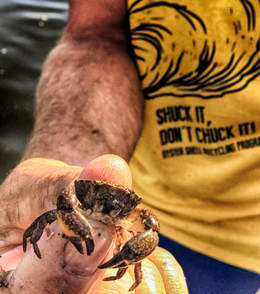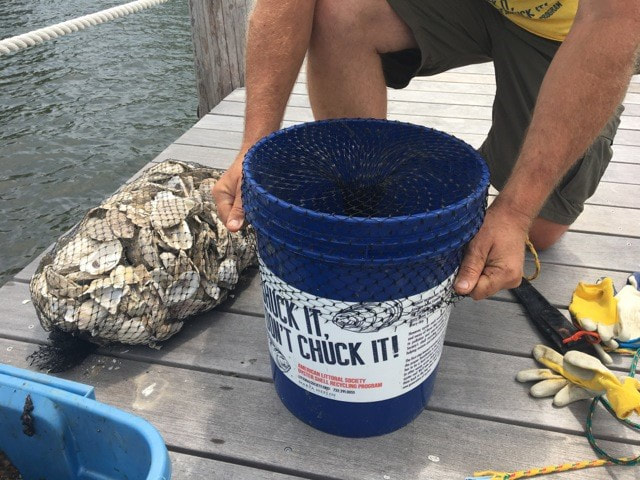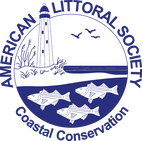|
Hello Dock Owners, Oyster Wranglers, Operation Oyster followers and all Oyster lovers, We'd like to bring you up to date on what has happened so far with the Operation Oyster: Two Rivers. We hung our first oyster shell bags on June 2 at the Oyster Point Hotel in Red Bank. Soon after, we hung dozens of additional bags at locations along the Navesink and Shrewsbury rivers in order to determine if wild oysters are living in the rivers and to assess what other species might make their homes in an oyster shell habitat. Bag hanging was followed on June 19 with a training session for volunteer oyster wranglers at 2nd Jetty restaurant in Seabright. Almost two dozen people turned out for that event. Soon after, those official oyster wranglers began monitoring 65 bags at 59 different locations.  By the end of August we will have hung a total of 195 bags and done two rounds of bag checks. So far, the oyster wranglers have not identified any wild oysters on any of the shell bags. However, they have found an enormous variety of marine life inside and on the outside of the bags, such as fish, crabs, shrimp, and snails. This is giving us valuable insight into what is inhabiting our waters below the surface, including oyster predators. Among the more interesting finds from the sampling were a host of foot-long American eels (Anguilla rostrata). American eels are a species of concern and we were pleased to see so many eels, especially high up the Navesink River near the Oyster Point Hotel. Very little is known about the migration patterns of that a mysterious fish. In our second round of sampling, we found a great many smaller specimens of that species. In July, most of our bags contained 50 or more naked gobys (Gobiosoma bosc). There were considerably fewer numbers of that fish when we checked the bags in August. The bag checks did lead to identification of a number of oyster predators. Among them: oyster drills, oyster toad fish and mud crabs. Obviously we would rather find oysters than oyster predators, but it will be helpful to know what is in the river that might prey on oysters. We cannot draw conclusions from the information gained so far, but as we continue to monitor into 2018 we should get a better picture of what now lives in the rivers and how that might affect the ongoing project. In September, we will continue to monitor bags and install a spat tank at the Rumson boat ramp so people from the community can learn more about the oyster life cycle. When oyster larvae attach to shells and begin to grow, they're called spat. In June of 2018, we plan to seed the tank with oyster larvae, then hang bags carrying oyster spat in the river in order to monitor their growth. Eventually, if all goes well and we can get the appropriate permissions, we hope this work will lead to installation of an oyster reef. Comments are closed.
|
Archives
July 2024
Categories
All
|


